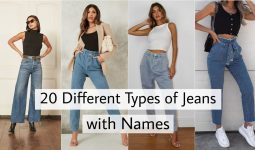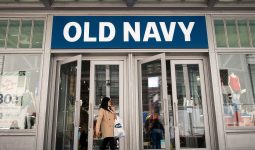Preparation for the meeting includes knowing what to wear to a job interview.
After all, how we present ourselves dramatically affects how others view us and our level of expertise.
Your ability to respond intelligently to queries and your presentation skills are essential for landing interviews.
Because of this, having a polished, professional image can help you persuade the hiring manager that you’d be a good fit for the organization.
Although I’m sure they don’t “judge a book by its cover,” recruiters immediately take note of a job seeker’s appearance when they enter the room.
However, they establish an opinion of you in only a few brief seconds, and how you appear affects how qualified they think you are for the job.
While there may be much discussion about whether that’s fair or true, looks matter.
Every social setting, including the workplace, has standards for attire, and breaking them might draw attention. So, take note of what to wear for a job interview.
The standards on how applicants and workers should dress vary by industry, and the proper attire might differ significantly based on the business, industry, and location.
However, it’s important to pay close attention to your look during a job interview regardless of what the rest of the staff wears.
Typically, the candidate dressed in a suit and tie, a dress, and high heels will come across much better than those who wear jeans and shoes.
Tips to Help You Decide What to Wear to an Interview
1. Research the Company’s Dress Code
Determine the level of formality at the job before selecting an interview attire. Try phoning the company’s HR department if you’ve visited the business’s website and social media pages and can still not find the dress code.
Inform them that you will soon attend an interview and would like to know the suitable attire. Additionally, it makes sense to think about the position and sector.
If you’re applying for a position in finance or law, for instance, you should wear formal business clothes. This includes a tailored dress, pantsuit, or skirt suit, as well as a matching suit and tie.
However, business casual is typically the ideal choice for jobs and organizations that are less formal.
2. Be Reasonable
Many believe the need to express oneself is fundamental to human nature. Although it is advised, the most important thing is that you describe yourself as the best candidate for the position.
Don’t use the justification that you’re being authentic or yourself if you dress carelessly, not minding what to wear to a job interview.
Remember that our wardrobe choices can be just as divisive as outspoken ones.
So, despite how much you want to express yourself, now is neither the place nor the time. It would be best if you concentrated on finding that job right now.
Nevertheless, your attire should be appropriate for the position you’re looking for.
A banker and a fitness teacher, for instance, require distinct wardrobes.
3. Be Authentic in Your Appearance
Dress the part. So far as your clothes are concerned, you’ve got it down, but are you? Your interviewers now better understand who you are from your well-written CV.
Don’t let them down. Let your appearance convey that the person they meet is the same as the one who appeared on your CV.
There shouldn’t be a break, so you should focus more on what to wear to a job interview.
Make sure you are at ease in whatever you decide to wear. This will boost your confidence in an unbeatable way!
4. Keep the Job Interview Attire Simple
Should you dress upscale for a job interview? It would be best to be wary of the riches, power, and high social status luxury businesses may suggest as a job candidate.
Although they allow a person to perform successfully and be a good team player, reliability, likeability, and empathy are frequently required in the workplace.
You might think twice about wearing these status markers because studies suggest that doing so makes people appear less hospitable and reliable.
Save those fine clothes for the party you’ll attend after getting the new job!
Interview Attires
1. Professional/Business Interview Attire
For a job interview, you should generally dress professionally or in business clothes. This could be a suit jacket, pants, shirt, and tie for males or a sweater and button-down for women.
Women should wear a blouse with dress pants or a bold dress. Additionally, you might add some current fashion trends to your attire.
All interview candidates should consider color while choosing an interview dress and avoid anything too flashy or brilliant to annoy the hiring manager. Nonetheless, be mindful of what to wear to a job interview.
2. College Job Interview Attire
When interviewing a college student for a professional job or internship, dress professionally.
If you’re hired, it will demonstrate that you are experienced and know how to conduct yourself.
Less formal clothes are appropriate when applying for university positions and less formal workplace jobs.
However, you should still present yourself appropriately, even for entry-level positions.
3. Casual Interview Attire
Don’t wear formal business clothing when interviewing for a startup company.
Although not overly formal, you want to appear suitable and professional.
Instead of arriving in a black suit and dress shoes, choose professional casual attire, such as relaxed-fit khakis, dark-wash trousers, and a good blouse.
4. Internship Interview Attire
As with any job, securing the internship you want depends in part on how well you do in your interview. Internships are a crucial component of career growth.
When you hunt for an internship, you must make a solid first impression by coming across as polished, professional, and attentive. Consider what to wear to a job interview if you need the training.
Depending on whether the workplace climate is formal, casual, or something in between, here are some suggestions for what to wear to an internship interview.
5. Summer Interview Attire
Do you have a summer job interview? These positions typically don’t require professional clothes and are more laid back.
Skip the suit, please. You should yet maintain a polished, businesslike appearance.
The ideal interview apparel for both men and women and advice on what to bring with you and how to dress for a casual interview are provided here.
What to Avoid When Choosing Your Job Interview Attire
The objective is to appear professional, regardless of whether the workplace is formal or informal.
Here are some things to stay away from to leave a favorable impression:
Avoid wearing outdated or improperly fitted suits and apparel. Fit matters regardless of age, gender, or other factors.
- Avoid wearing attire that is too casual or unsuitable for particular occasions.
- Avert appearing careless. It can seem unprofessional if you don’t tuck your shirt in or iron it.
- Skip the flip-flops, open-toed sandals, and athletic or sports shoes.
- Don’t wear shorts or a tank top.
- Don’t let your skirt or pants show through your underwear or bra straps.
- Standing with your arms at your sides and the hem above your fingertips is usually a sign that a dress or skirt is too short. Pick a lengthier one.
- Keep your belly covered, and avoid wearing low-cut tops.
- Avoid wearing perfume or cologne. The smells can be distracting in tight spaces, and some fragrances might also be quite upsetting to other people.
Men’s Interview Attire
Men who are interviewing for high-level positions should follow these tips:
- A suit with a solid hue like navy, black, or dark gray is appropriate.
- White shirt with long sleeves
- Belt, socks, and shoes that match
- Tie
- Facial hair and freshly styled hair
- Portfolio or satchel
Women’s Interview Attire
Here are some general recommendations for what ladies should dress for a job interview:
- A suit with a solid hue like navy, black, or dark gray is appropriate.
- Dress skirt
- Matching blouse
- Easy shoes
- Little jewelry
- Only a small quantity of perfume
- Portfolio or satchel
How to Do Your Makeup for a Job Interview
Your makeup should also not draw the interviewer’s attention away from you.
You shouldn’t wear bright lipstick or glittering eye shadow at this time. Instead, use inconspicuous, subtle makeup.
What to Bring to an Interview
Ensure you have dressed appropriately and that everything fits comfortably before the interview.
So that you won’t have to spend time getting ready on the day of the interview, prepare your clothes the night before.
If your outfit can only be dry cleaned, take it to the dry cleaners after the interview to prepare you for the next one.
The night before your interview, prepare your interview clothing and assemble the following items to bring with you:
- Directions to the interview site
- Name and phone number of the person you are meeting with in contact
- Identification
- Paper and a pen
- More versions of your resume
- Three references are listed.
- Samples of work (depending on the job)
- Use a laptop or tablet to display your work (depending on the job)
- Bring breath fresheners with you when you enter the building.
In conclusion, since first impressions matter, getting ready for an interview may be as stressful as the actual interview.
We hope that these suggestions will help you choose the most refined job interview wardrobe for your next big day, whether you’re applying for a position in a formal business environment or interviewing online in a more informal setting.
Remember to be yourself, dress comfortably, and demonstrate your suitability for the position. I wish you luck!








